Iceland. It’s a country which, to many, will represent icy plains and sub-zero temperatures; snow-drenched mountains and the northern lights. But in summer time, it springs into life with wild rivers and vast forests making the freezing winter feel like a distant memory.
And because much of the snow and ice has melted away, wild tracks are left behind. Rutted, gravelly and strewn with obstacles, these roads are open to the public providing they’re in cars suitable to take on the job.

It makes it the perfect place to try out the new Nissan Navara – a truck famed for its off-road handling and rugged reliability. Certainly, with the Japanese firm claiming that the big one-tonne pick-up is even better on rough surfaces than ever before, it shouldn’t falter against what Iceland has to throw at it, right?
We land at Keflavik Airport, close to the capital Reykjavic. It’s grey and overcast and – despite being the start of July – pretty chilly, too. The first leg of our journey is a pretty standard meander down a normal stretch of highway; single lane roads restricted to just 90kmh (around 56mph). It feels like a snail’s pace, though it does mean that we get to drink in the Icelandic scenery as it unfurls either side of us.
At slower speeds the Navara behaves itself, displaying a fair amount of bodyroll in the bends but otherwise a distinct lack of drama. The ride at these lower speeds is jostly, but no worse than you’d expect from a car sitting on a traditional ladder chassis. There’s a touch of wind noise too, but given the Navara’s bluff grille and upright windscreen, it’s far better than you’d expect.
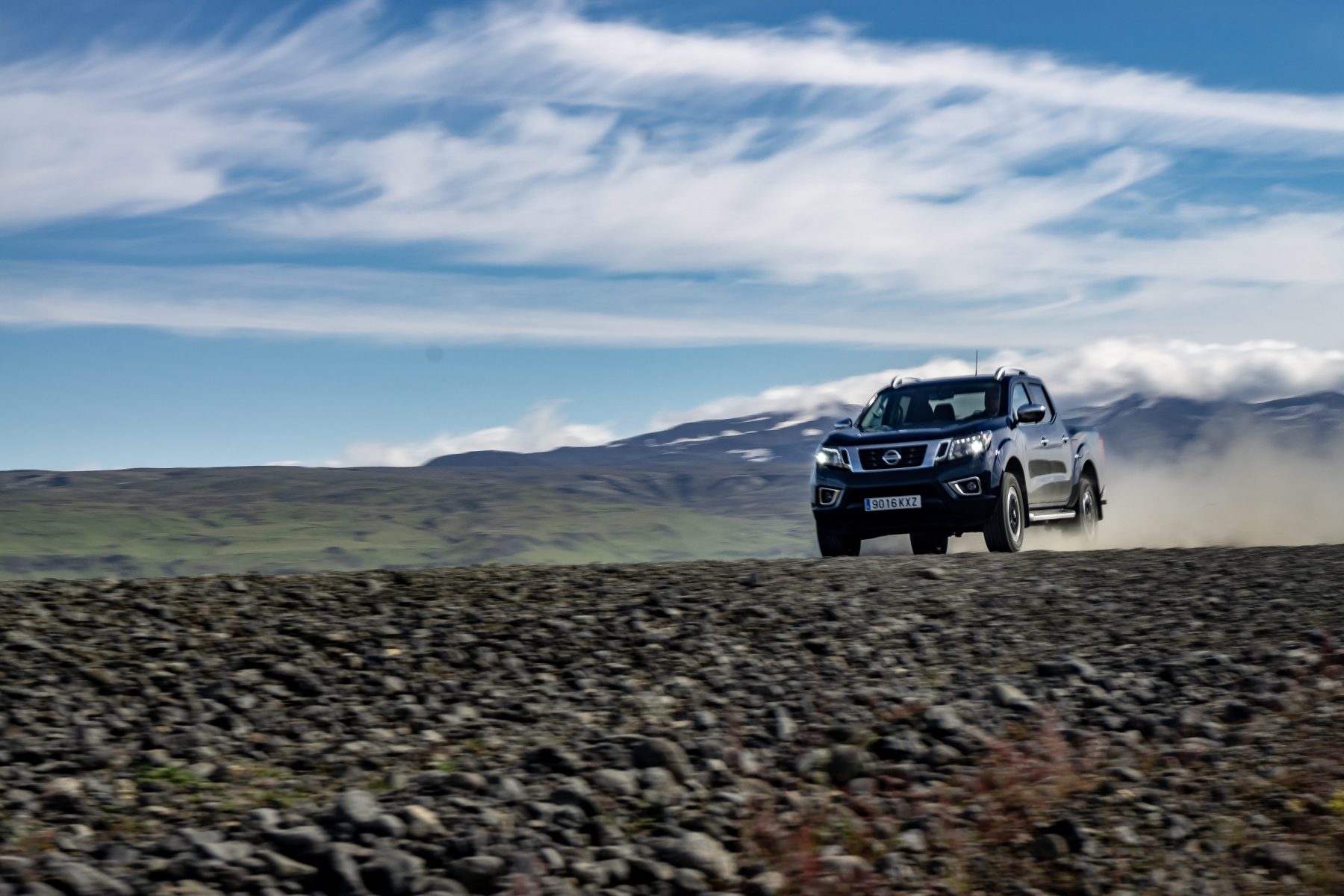
After the short hop along the coast we arrive at our overnight stop, and the sun is still very much in the sky. At this time of year there’s just around an hour of ‘twilight’ – it never properly gets dark. It means that when we finally retire at around 11:30 in the evening, it feels as though it could be the middle of the afternoon.
Up early next morning, and the trucks are lying in wait for us to get started. It’s a staggeringly beautiful start to the day, with vast, towering cliff faces close behind us staring a glorious flat stretch of countryside in the eye.
We’re actually surprisingly close to Eyjafjallajökull, the site of the volcanic eruption which caused travel chaos back in 2011. Fortunately enough there’s no signs of another eruption – the Navara is tough, but it’s unlikely to be able to withstand a trial by lava.
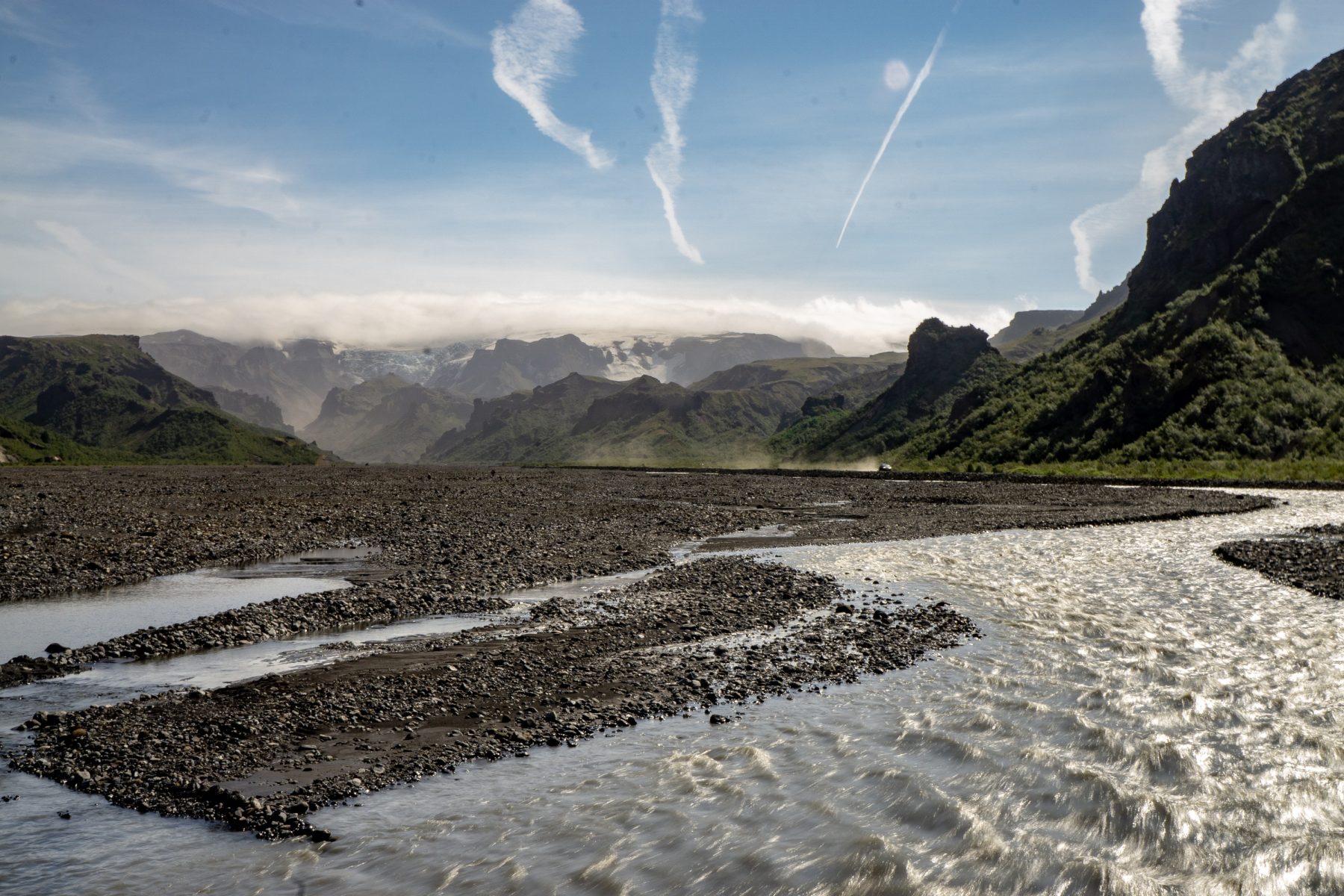
It’s quickly apparent that today’s drive wouldn’t be as mundane as the day before. We’re on tarmac for a short stretch, but our route quickly veers off from this an immediately hits rough gravel – more than manageable for the Nissan, but other less off-road-ready vehicles are already struggling as we pass them.
We scythe past the Seljalandsfoss waterfalls, and though we stop for a moment to soak up the scene, we’re quickly on the road again. The surface is getting even craggier now, with larger rocks impacting into the Navara’s tyres. We’re sending a huge plume of dust up behind us too which looks impressive, but means other vehicles give us plenty of distance.
We cross several streams and rivers (some deeper than others) and we’re amazed to see huge buses fitted with off-road tyres and lifted suspension fording the same sections with zero drama. The people on board seem just as lackadaisical – it’s as if they’re on the Megabus to Heathrow.
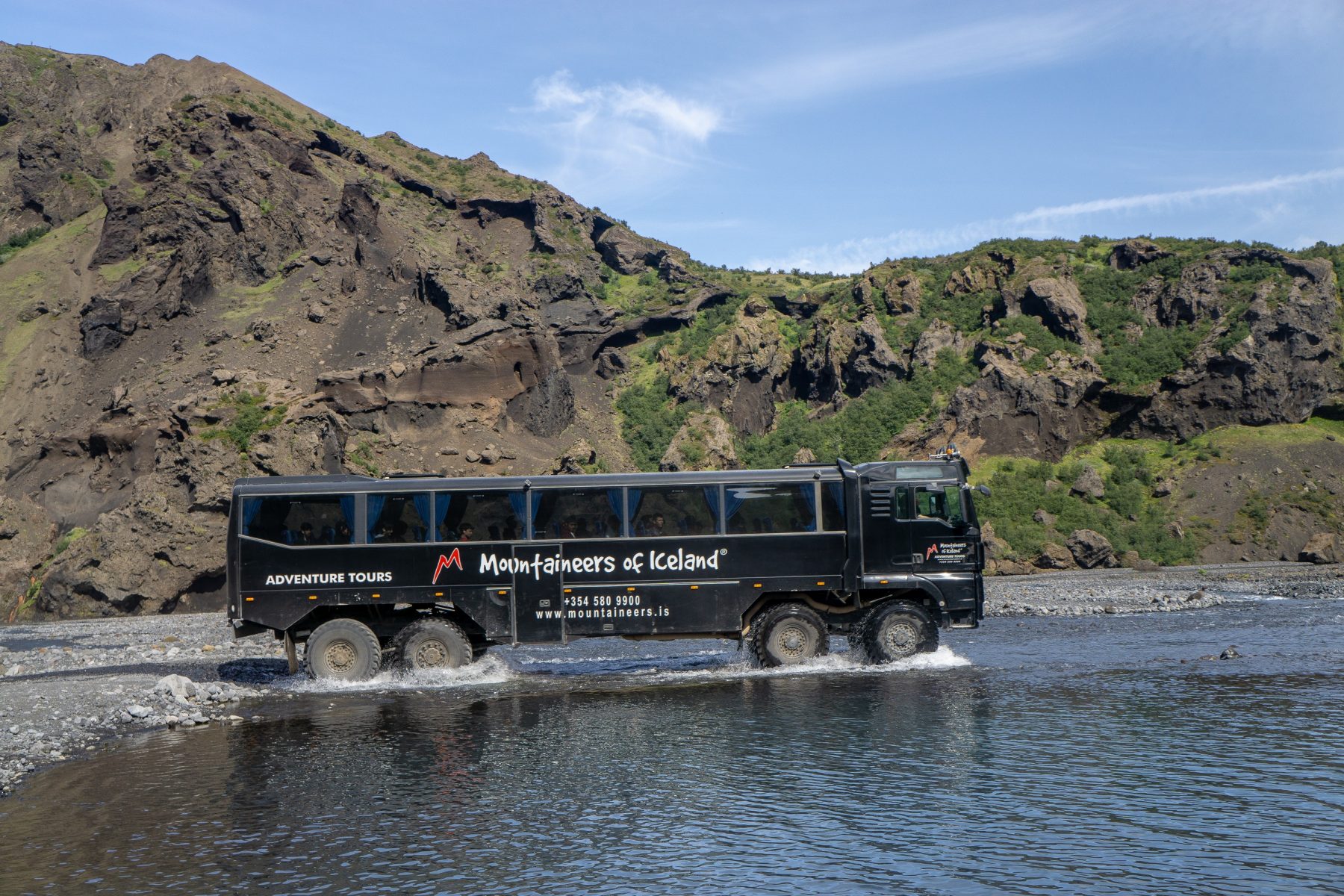
We’re aiming for the Basa huts and campsite – our middle stop for the day – and before long we’ve rolled into the site, crossing a small stream while doing so. Parked around us is a Smorgasbord (sorry, that’s Swedish) of off-road hardwear; lifted Nissan Patrols rub shoulders with ratty Range Rovers and several of the go-anywhere buses that we’d seen earlier. In the UK, the Navara towers over pretty much everything, but in Iceland it comes perilously close to being considered compact.
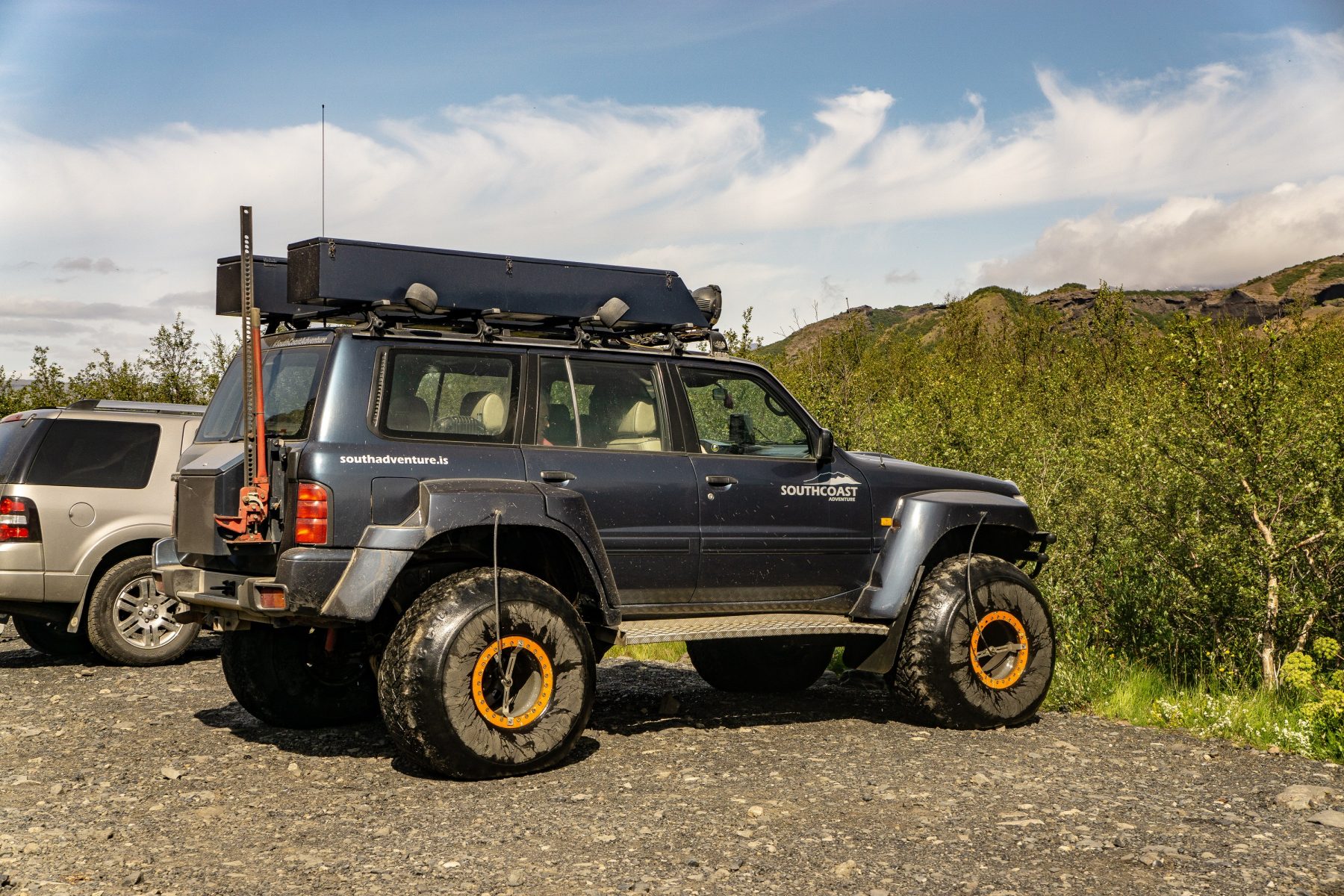
We have a brief stopover, and then it’s back to the trucks to continue on a more rugged leg of the journey. We’re in convoy now with the rest of the group (we’d been out on our own prior to this), and it means the pace has dropped, but it’s a necessary change; the terrain has become even more rutted and technical as we progress towards the edge of a large section of glacier.
From there, the route gets tougher. It varies between washboard sections of hard ground, to sandy berms and corners with a good helping of rocks and rivers thrown in for good measure. We keep the Navara in standard four-wheel-drive mode for the most part; low-range was only needed for the steepest of inclines, and even then the truck felt as though it could accomplish them without having to trouble that setting.
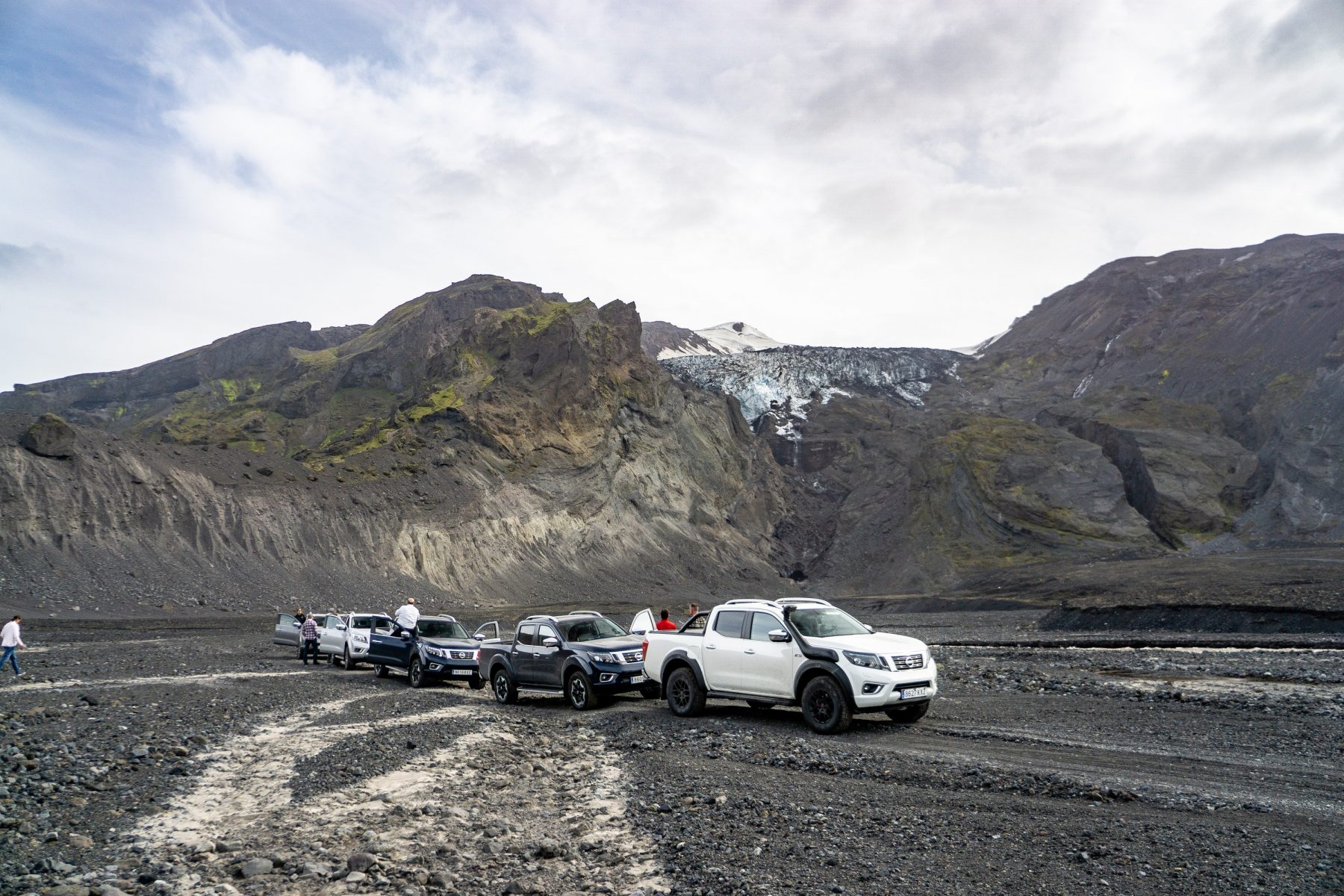
And soon, we’re closing in on the coast, leaving the mountains and glaciers behind. Before long sand comes into view, but it’s not white – it’s purest black, a clear indication of the island’s volcanic core. It necessitates dropping some of the air from the Navara’s tyres, to help it deal with the powder-soft sand.
With the wind roaring around us, we spike up a steep slope and come to a stop with a full view of the sea ahead. With the black sand, strong gusts and grey skies, it’s a bleak visage. The strength of the wind causes the sand to form around the Navaras lined in a row, giving each the distinct look that it’s being absorbed by the beach.

And with that, we head home. But what a commute back, with huge stretches of flat beach giving us ample room to see how the Navara copes with high speeds off-road. We dart and dive with another truck in the group, each taking turns to splash into the sea. It’s a scene to remember.
Before we know it, we’re at our overnight destination. The trucks breathe a sigh of relief, and more than a small amount of sand is deposited on the sand as we roll to a stop. It’s been a trip filled with climbs, rivers and staggeringly breath-taking scenery – and the Navara has taken it all in its stride.

